
Large saucer dish with Qilin decoration, Shunzhi/ early Kangxi period, ca: mid-17th century, Courtesy: Ralph M. Chait Galleries, Inc.
Collectors and curators were back in full force this year, now that Covid is largely behind us. Even those from China came in large numbers due to the recent relaxation in travel restrictions, which resulted in the strongest sales during Asia Week New York since pre-pandemic years. Curators from over three dozen museums from all over the U.S. and abroad made the rounds of the galleries and were active buyers.
Among the Chinese porcelain pieces from Ralph M. Chait Galleries, Inc. acquired by collectors was a large circa 17th century Shunzhi/early Kangxi period saucer dish with Qilin decoration.
One of several paintings sold at INKstudio was Splendid Flowers Valley, 2022, a large painting by the Taiwanese artist, Peng Kanglong (b.1962), which was being shown for the first time. It is from his new series of monumental landscape and flower paintings, where he explores integrating these two formerly separate genres.
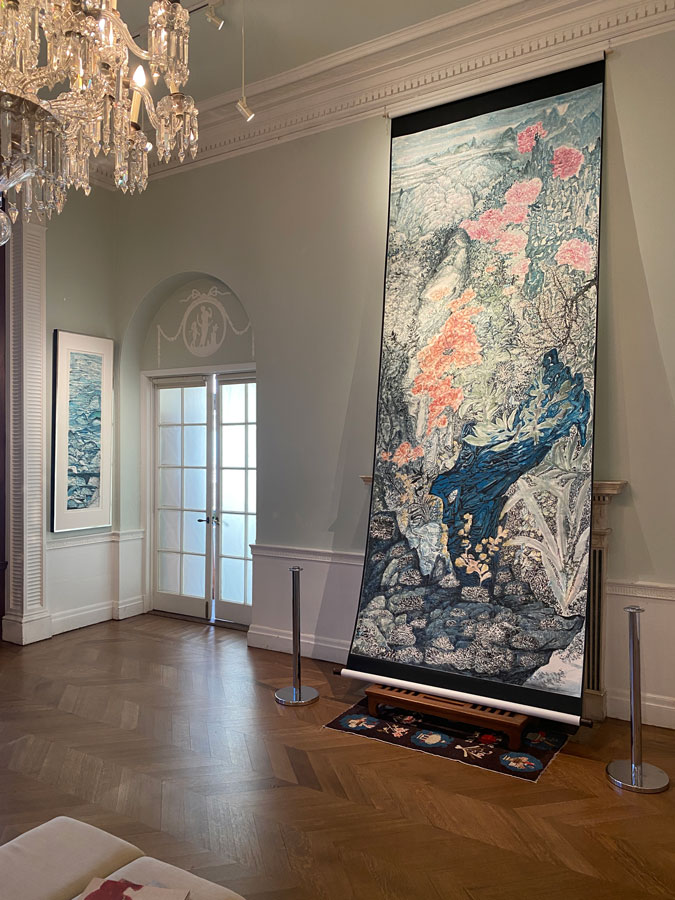
Peng Kang-long, Valley of Many Splendored Flowers, 2022, Ink and color on bespoke paper, 368 x 145 cm., Courtesy: INKStudio
Two-thirds of The Mary and Cheney Cowles Collection of Chinese Ceramics at Zetterquist Galleries was sold, and its success was certainly enhanced by the increased foot traffic. Among those was a large Qingbai jar, from the Yuan dynasty (1271-1368), acquired from JJ Lally and Co., in 1988, which was especially popular.
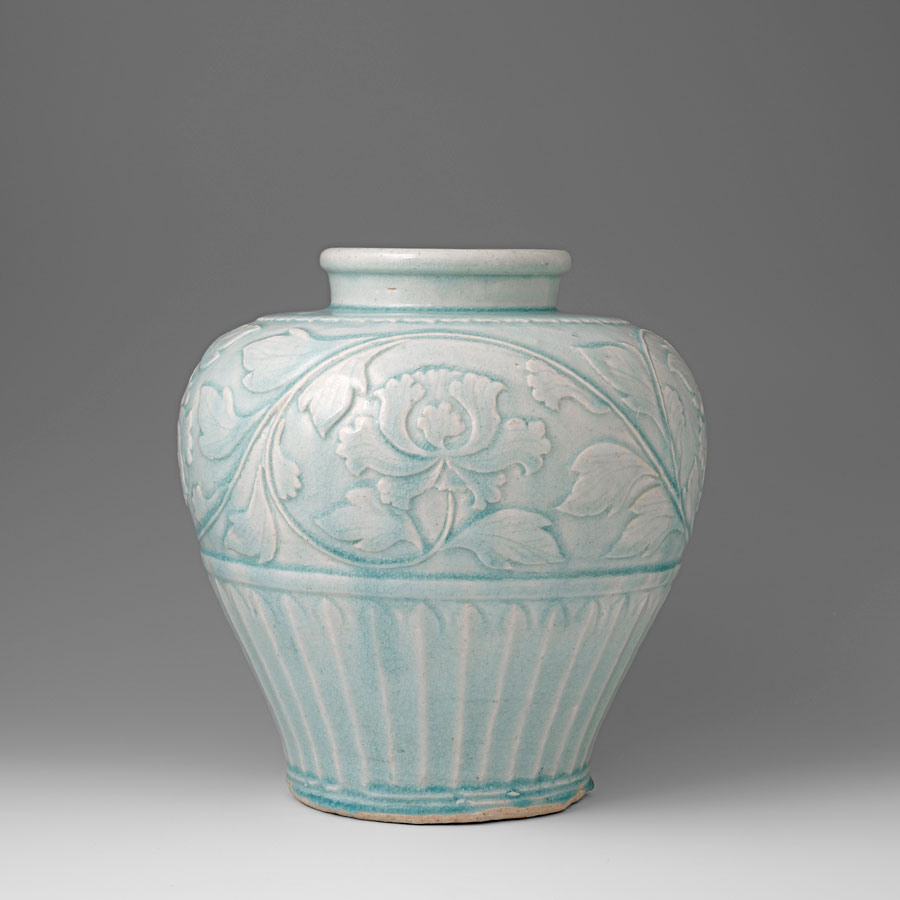
Large Qingbai Jar, Yuan Dynasty (1271-1368 AD), China. Height 29.8 cm, Courtesy: Zetterquist Galleries
In the category of Indian, Himalayan, and Southeast Asian Art, Brendan Lynch, of the London-based gallery Oliver Forge & Brendan Lynch Ltd., reported that among their numerous sales was Buland Darwaza Gateway at Fatehpur Sikri Company School, Agra, circa 1815, purchased by the Princeton University Art Museum.

Buland Darwaza Gateway at Fatehpur Sikri, Company School, Agra, circa 1815, Pencil, pen and ink with opaque pigments on laid paper watermarked Ruse and Turners 1813, black ruled border inscribed The Gateway at Futtypore Sicri, 18 1/8 by 23 2/3 in.; 46 by 60 cm. painting, 21 by 27 2/3 in.; 53.5 by 70.2 cm. folio, Courtesy: Oliver Forge and Brendan Lynch, Ltd
Curators from many museums as well as private collectors came to Kapoor Galleries. A gray schist relief of Panchika and Hariti, Gandhara, dated 2nd-3rd century was one of the more important pieces to sell, reflecting the strong interest in Gandharan art in the market.

Gray schist relief of Panchika and Hariti, Gandhara, dated 2nd-3rd century, 17 ½ in. (44.4 cm.) wide, Courtesy: Kapoor Galleries
Thomas Murray saw many museums and serious collectors who focused on Indonesian textiles and Indian trade cloths, which represent great market value in his opinion. Among the pieces that were snapped up was an 18th century Ramayana Trade Cloth, India, for the Indonesian Market.

Ramayana Trade Cloth (16837), India, for the Indonesian Market, Cotton; painted mordant and resist, 18th Century, 38 x 203 in (96.5 x 515 cm), Courtesy: Thomas Murray
Japanese art, particularly prints and modern and contemporary works, were in great demand.
Ippodo Gallery featured Terumasa Ikeda: Iridescent Lacquer, the artist’s first exhibition outside Japan, focused on his revolutionary laser-incised raden technique, a method he spent eight years developing. Collectors bought Ikeda’s delicate jewel-like pieces including “Shore” Incense Container, made of Urushi lacquer, cypress, mother-of-pearl, turbo snail pearl, silver lip oyster, and gold.
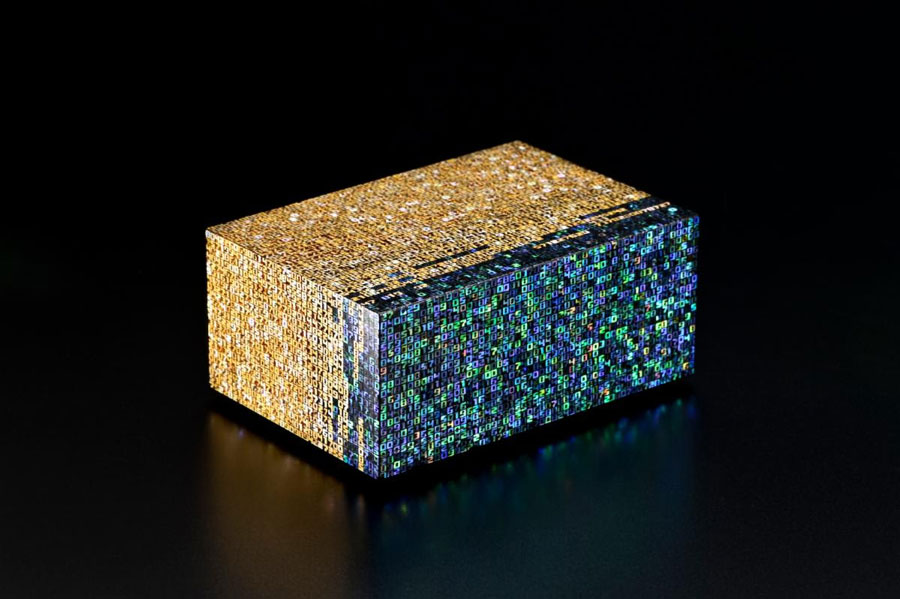
Terumasa Ikeda, “Shore” Incense Container, 2023, Urushi Lacquer, Cypress, Mother-of-Pearl, Turbo Snail Pearl, Silver Lip Oyster, Gold, H1.24 x W2.75 x D1.92 in (H3.15 x W7 x D4.9 cm), Courtesy: Ippodo Gallery
Included in Japanese Paintings and Prints: 1800-1860 at Sebastian Izzard LLC Asian Art, a print by Katsushika Hokusai (1760-1849), Large Map of China, a large, imaginary view of China and the last map made by Hokusai, was among those by the artist that were sold.
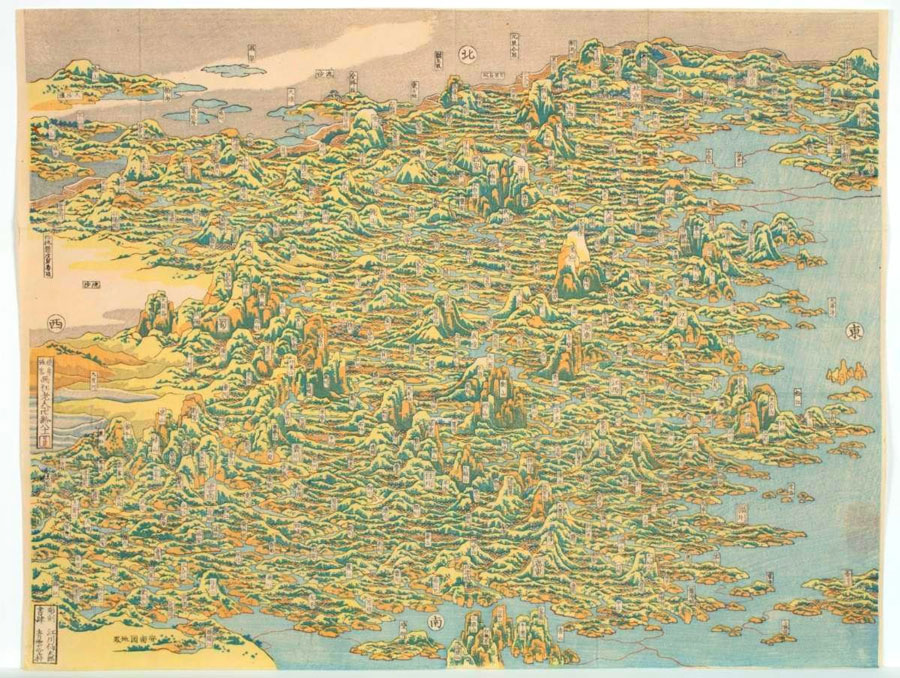
Katsushika Hokusai (1760-1849), Large Map of China, 1840, Color woodblock print: baiōban yoko-e, 16½ x 21⅝ in. (41.9 x 54.9 cm); 1840, Signed: Sōbō ryokyaku Gakyō rōjin Manji yowai hachijüichi (Manji, the old man crazy to paint, aged eighty-one, traveler to Kazusa and Awa provinces), Block-cutter: Egawa Sentarō, Publisher: Seiundō (Hanabusaya Bunzō), Courtesy: Sebastian Izzard LLC Asian Art
There was a steady flow of serious Asian art connoisseurs and enthusiasts at Joan B Mirviss LTD. Most of the works from Painted Clay: Wada Morihiro and Modern Ceramics of Japan, her exhibition of Wada’s oeuvre alongside the many Japanese artists who paint on clay found buyers. Renraimonki, by Wada Morihiro, Connected Flower Buds Vessel, 1992 was one of them.
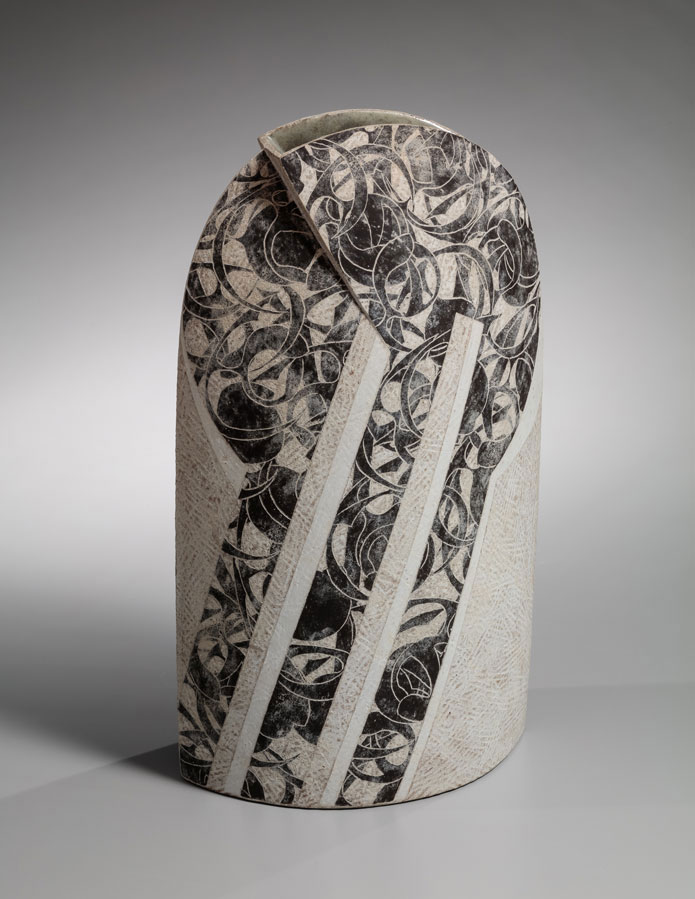
Wada Morihiro (1944-2008), Renraimonki, Connected Flower Buds Vessel, 1992, Courtesy: Joan B Mirviss LTD
Nana Onishi of Onishi Gallery welcomed numerous collectors and museum curators. One of the pieces she sold was her most important work by Osumi Yukie (b. 1945), Silver Vase, Bakufu (Waterfall), 2011. Osumi is the first female artist who was designated as Living National Treasure in history in the field of metalwork.
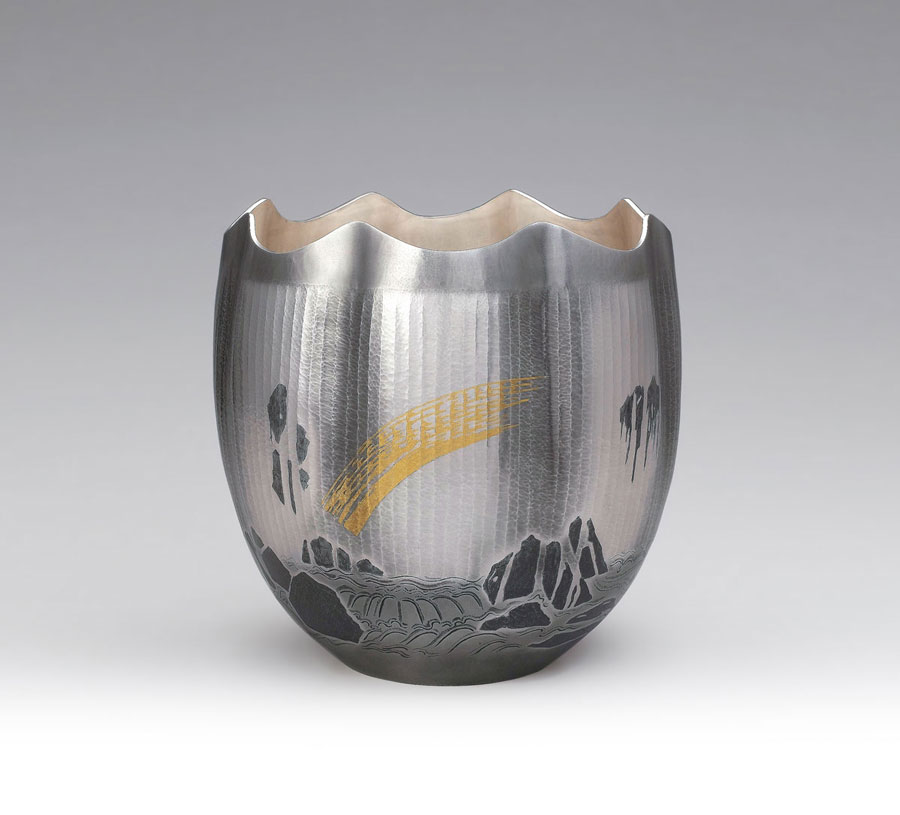
Osumi Yukie (b. 1945), Living National Treasure, Silver Vase Bakufu (Waterfall), 2011, Hammered silver with nunomezōgan (textile imprint inlay) decoration in lead and gold, h.10 x dia.9 7/8 in. (25.4 x 25.1 cm), Courtesy: Onishi Gallery
At Scholten Japanese Art prints and watercolors from their Modern Masters show found buyers as did numerous prints from their other exhibition, Ukiyo-e Woodblock Prints from the Shin Collection. Several excellent examples of landscape prints by Utagawa Hiroshige (1797-1858) from that collection sold well, notably a rare impression of Night Rain at Karasaki from the Eight Views of Omi, driving additional sales of Hiroshige prints from the gallery’s collection.

Utagawa Hiroshige (1797-1858), Eight Views of Omi: Night Rain at Karasaki, ca. 1835, woodblock print, 9 3/4 by 14 1/4 in., 24.9 by 36.2 cm, Courtesy: Scholten Japanese Art
First-time participants, Shibunkaku, a prominent Kyoto- and Tokyo-based gallery, exhibiting postwar and abstract Japanese calligraphy and paintings at Joan B Mirviss LTD, sold works to a museum and private collectors. Those included a four-panel folding screen in ink on paper by Morita Shiryu, Kumo-mushin, circa 1964.
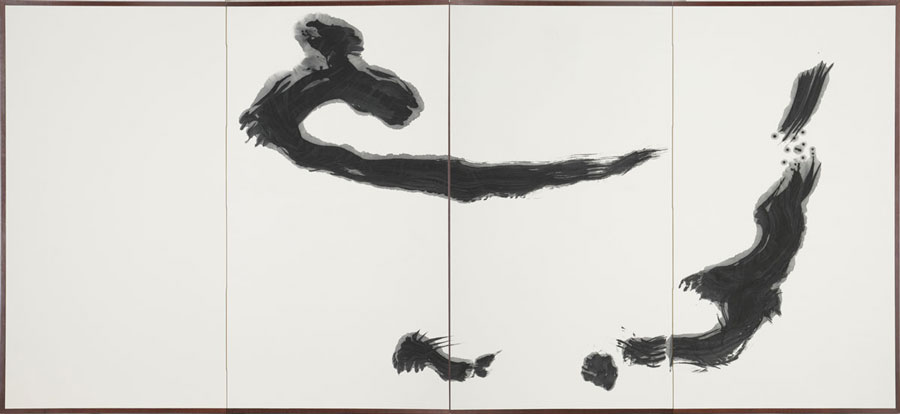
Morita Shiryū, Kumo-mushin (The cloud is egoless; the cloud is egoless; Like drifting clouds we should live spontaneously) c.1964, CR no. XVI-904, Ink on paper, a four-panel folding screen 333 x 153.5 cm (overall), Courtesy: Shibunkaku
Heakyum Kim of HK Art & Antiques LLC, who specializes in Korean ancient and contemporary art, sold contemporary paintings by Kim Sou, Cho Yong-Ik, Kim Hyungguen, and Lee Daiwon. One of these is a striking work by Cho Yong-Ik (b. 1934), 69-521, 1969.

Cho Yong-Ik (b. 1934), 69-521, 1969, Oil on canvas, 25 x 21in. (64 x 53.3cm.), Courtesy: HK Art & Antiques LLC
